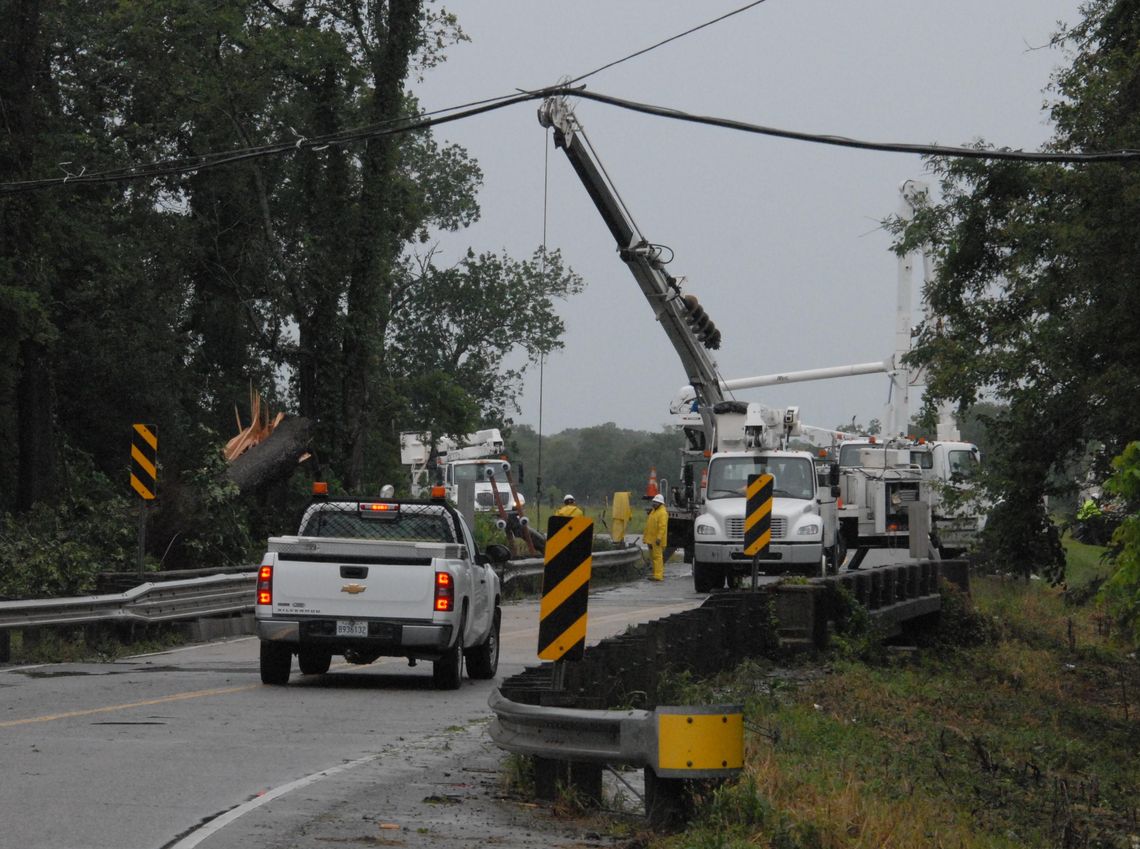
Karl D. Jeter
[email protected]
Henri C. Bienvenu_
[email protected]
St. Martin Parish – Having avoided the dire possibilities posed by a slow-moving storm in the midst of a record high water event on the Mississippi River, most Louisiana residents are returning to their normal lives this week with a sense of great relief.
When the tropical storm developed briefly into Hurricane Barry as it reached the Louisiana coast near Vermilion and West Cote Blanche Bays, parish residents and officials prepared for the worst.
The National Hurricane Center had predicted the possibility of
15 to 20 inches of rain for parts of south Louisiana over the weekend.
Iberia and St. Mary took the initial brunt of the storm but Lower St. Martin residents escaped serious flooding.
While the storm knocked down trees in and around the St. Martinville-Breaux Bridge-Henderson areas and caused some power outages, there were no reports of serious damage or injuries.
Homeland Security and Emergency Preparedness Director Lt. Col. Terry Guidry told the Teche News his office has received no information about residential or business flooding in the parish.
“We were blessed,” Guidry said, “There were plenty of downed trees, and that accounted for most of the power losses. But we have had no calls about homes flooding so far. The area is recovering quickly.”
Cleco reported about 36,000 customers lost power for some period of time, Entergy had about 14,000 outages and SLEMCO about 12,500.
Agriculture Spared
County Agent Stuart Gauthier reported Monday that Barry had little impact on the parish’s sugarcane and soybean crops although rice might experience some loss.
More than 28,000 acres of sugarcane are cultivated across the parish and Gauthier said there appears to have been little or no damage to the crop.
“The cane stalks are not yet tall enough to see much bending or breaking,” he reports. “And the crop needed the rain. So the storm was actually beneficial to the sugarcane.”
Parish farmers planted only 5,000 acres of soybeans this season, down from the peak acreage of 13,000 to 15,000 acres in years past. And damage to the beans was minimal.
There are about 3,000 acres of rice in the parish and Gauthier said there is some concern that the increased water level in those fields due to Barry’s rains may pose a problem.
“Some rice farmers might actually have to pump water out of their fields,” he says.
The storm did provide a practice run for a hurricane season that has just begun and runs until November with late August, September and early October historically being the most active time for storm development.

